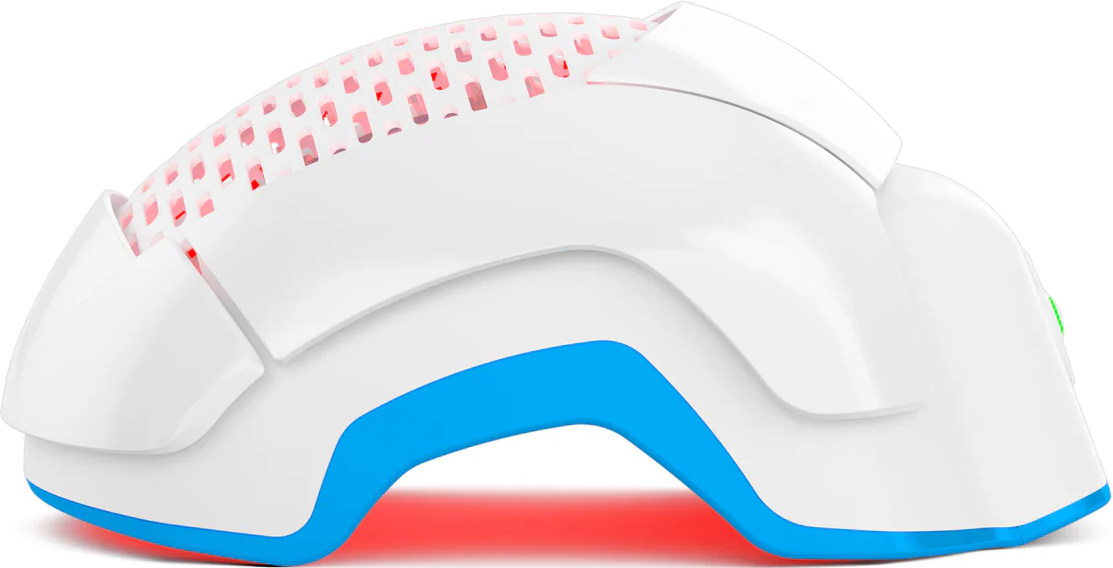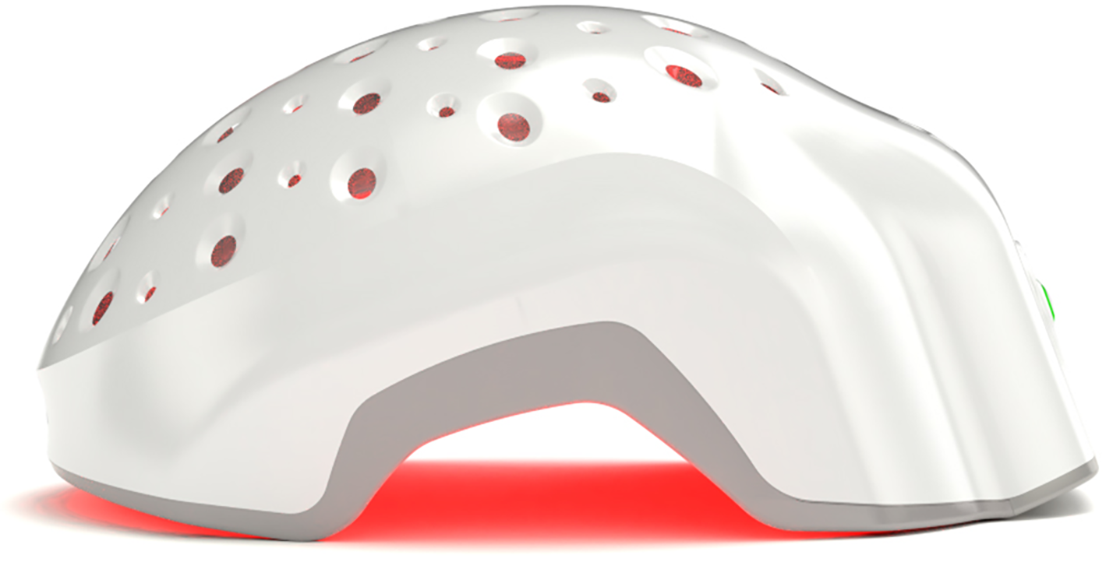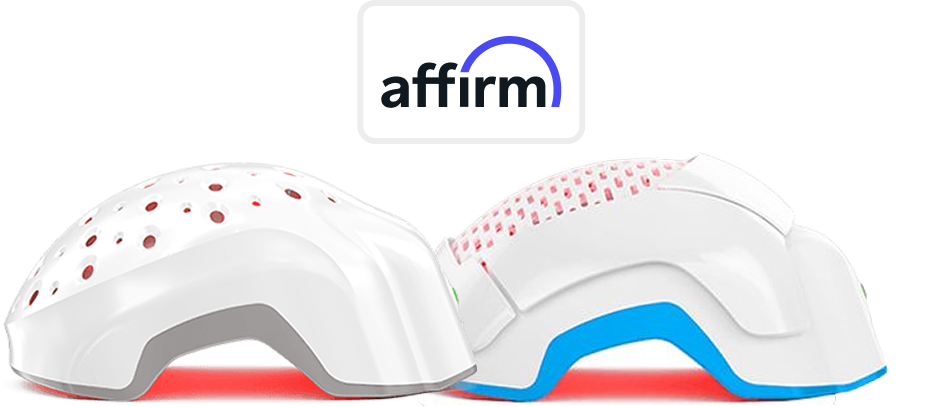When it comes to the causes of hair loss, the usual suspects get all the blame: stress, hormones, genetics. But what if there’s a quieter, sneakier culprit hiding right under your nose – or more accurately, in your walls?
Yes, mold.
So, can mold cause hair loss? Absolutely, and it’s a bit of a dirty secret that deserves to be aired out.
Mold exposure can trigger health reactions, from immune system disruption to chronic inflammation, all of which can mess with your scalp’s ability to support healthy hair growth. And while mold is typically known for its unpleasant musty smell or the stains it leaves behind, its effect on your hair follicles could be even nastier – leading to hair thinning, shedding, and even a condition known as telogen effluvium.
In this blog, we’ll discuss how mold exposure could be affecting your hair health, what symptoms to look out for, and the steps you can take to keep both your scalp and your living environment in top shape.
What is Mold?
Mold is a type of fungus that loves damp, dark, and humid environments – basically, it’s nature’s cleanup crew with a serious moisture addiction. Whether it’s lurking in basements, hiding behind leaky pipes, or colonizing that bathroom corner that never quite dries, mold multiplies by releasing spores into the air, which can hitch a ride into your body. Once mold spores make their way inside, they don’t just settle quietly; they can trigger an array of reactions that have far-reaching health impacts, including on your hair.
How Can Mold Exposure Cause Hair Loss?
Mold exposure and hair loss aren't two things most people would naturally link, but when mold sneaks into your environment, it doesn’t just lurk behind your drywall. It can quietly affect your health in surprising ways, including your hair. And here’s the thing – because hair is technically considered “non-essential” for overall health, it’s often the first structure to be “sacrificed” when your body deals with underlying health issues. When your body needs to prioritize vital functions, it diverts nutrients away from your hair follicles, leaving them to fend for themselves. This redirection can lead to hair “starvation,” thinning, and ultimately, hair loss.
Let’s break down exactly how mold exposure can lead to toxic mold hair damage and the different mechanisms through which it can wreak havoc on your scalp and hair follicles.
1. Chronic Inflammation
Mold can cause hair loss through chronic inflammation in the body. When mold spores find their way into your body – whether through inhalation, skin contact, or ingestion – they can trigger an immune response, leading to widespread inflammation.
While inflammation is a natural reaction meant to protect your body, prolonged inflammation is another story. When it affects your scalp, this inflammation can choke off the blood flow to your hair follicles, impairing their function. Essentially, those hair follicles become starved of the nutrients and oxygen they need to thrive, resulting in weaker hair and – you guessed it – more hair falling out.
Learn More: How Scalp Inflammation Can Lead to Hair Loss?
2. Immune System Impact
Your immune system is your body's line of defense against external invaders, but prolonged exposure to mold can throw it off-balance and can make your hair fall out. When confronted by mold spores or mycotoxins, the immune system can go into overdrive or become suppressed.
Both scenarios spell trouble for your hair follicles. An overactive immune response may start attacking hair follicles by mistake (autoimmune conditions like alopecia areata), whereas a weakened immune system leaves hair follicles vulnerable to damage and reduced regeneration. This compromised state can lead to hair shedding, thinning, and ultimately, increased hair loss.
3. Hormonal Imbalance
Mold exposure doesn’t just stop at attacking your immune system – it also likes to throw your hormones into disarray.
Hormones like cortisol (the stress hormone), estrogen, and even testosterone are crucial for healthy hair growth. Mold exposure can disrupt your body’s hormonal balance, and this disruption can affect the hair growth cycle. Conditions like telogen effluvium, where hair follicles are pushed prematurely into the resting (and eventually shedding) phase, are often triggered by such imbalances. The result is – excessive hair shedding and thinning.
4. Toxin Production
Certain fungus, particularly the dreaded black mold, is known for producing mycotoxins – toxic compounds that are no friend to your body or hair. When these spores are inhaled, they enter your lungs and bloodstream, allowing mycotoxins to circulate throughout your system. This infiltration affects more than just your respiratory health; it disrupts various bodily functions, including those that support hair growth.
When mycotoxins disrupt your body's natural processes, including cellular function and nutrient delivery to hair follicles, the damage can leave your hair weakened, more prone to thinning, and unable to grow effectively. Essentially, mold toxins can cause hair follicles to become stressed and unable to produce healthy hair.
5. Nutrient Deficiencies
Healthy hair growth depends on a steady supply of nutrients like biotin, vitamin D, and zinc. Mold exposure has a way of sneaking into your digestive tract, interfering with nutrient absorption, and causing deficiencies in essential vitamins and minerals.
Without these key nutrients, hair follicles can't function optimally, leading to weakened hair strands and breakage. It's like trying to grow a garden in soil that’s missing all its nutrients – the results are going to be less than ideal, and your hair will show it.
6. Telogen Effluvium
One of the major impacts of mold toxicity on hair health is the triggering of a condition called telogen effluvium.
Telogen effluvium is characterized by excessive hair shedding and is often a reaction to physiological stress. Prolonged exposure to mold and its toxins creates this stress, pushing a large number of hair follicles into the telogen phase – or the resting phase – of the hair growth cycle prematurely. This sudden shift means more hair is being shed at a faster rate, making it seem like hair is falling out in clumps. While telogen effluvium is typically reversible, addressing the mold exposure is crucial to stopping the hair loss in its tracks.
Do All Kinds of Mold Cause Hair Loss?
Not all molds are out to sabotage your hairline and cause hair loss. But if we’re talking about the most notorious offender, black mold is the prime suspect. Known scientifically as Stachybotrys chartarum, black mold is infamous for releasing mycotoxins – potent substances that can trigger a slew of health issues, including hair loss.
While other mold types can spark allergies and minor irritation, black mold effects on hair are more intense. The aggressive mycotoxins produced can interfere with your body's natural processes, potentially leading to inflammation, scalp damage, and hormonal imbalances.
And let’s not forget fungal scalp infections from mold. While black mold might not directly invade your scalp like some fungi, prolonged exposure to mold spores can weaken your immune system, leaving you susceptible to infections and hair problems. This can manifest as scalp irritation, itching, and even follicle damage – all paving the way for hair thinning and shedding.
Symptoms of Black Mold Exposure
While hair loss may be an eyebrow-raising symptom of black mold exposure, it’s not the only one to put on your radar. Mold toxicity has a way of stirring up a storm of bodily reactions, some of which could leave you scratching your head – quite literally.
Here are some other signs to watch for that might clue you into a moldy situation beyond just mold-related hair loss.
Chronic Coughing or Sneezing
If you’re suddenly sounding like a chain smoker or have an itch that just won’t quit in your throat, it could be more than a seasonal allergic reaction. Persistent coughing or sneezing is one of the hallmark symptoms of mold exposure.
Irritation of the Eyes, Nose, or Throat
Mold spores can be pretty irritating – literally. That red-eyed, scratchy-throat feeling might be more than a dusty room; it could be a reaction to mold spores hanging around.
Respiratory Problems or Shortness of Breath
If taking a deep breath feels more like breathing through a straw, it’s time to check for the fungus. Spores can affect your lungs, leading to breathing difficulties and respiratory issues.
Skin Rashes or Hives
Your skin isn’t a fan of mold toxins, either. Redness, rashes, or hives could be your body’s way of saying it's fighting off an unwelcome intruder.
Fatigue and Weakness
Mold toxicity is draining – quite literally. If you’re feeling more sluggish than usual or finding it tough to get out of bed, mold exposure might be worth investigating.
Dizziness or Headaches
Feeling lightheaded or battling frequent headaches? While there are plenty of causes, mold exposure has been known to hit your head, and not just figuratively.
These symptoms are signs your body is dealing with more than just dust bunnies. Hair loss and hair thinning could be part of the bigger picture of mold toxicity, as your body tries to fight back against these airborne invaders. Addressing these symptoms promptly is crucial for your overall health – and your hair’s well-being, too.
Treatment for Mold-Related Hair Loss
The great news is that mold-related hair loss is often reversible. Once you cut off the mold exposure, your scalp and hair can start to bounce back. But don’t wait around – mold exposure is nothing to shrug off, especially when your hair health is at stake.
Here's how to kick mycotoxins out of your life and support those lovely locks in the process.
1. Address Mold Exposure: Nip It in the Bud
First things first: get rid of the mold. You can't treat a mold-induced problem without addressing the source. Whether it's hiding behind your bathroom tiles or lurking in your basement, mold needs to go, and this means proper mold remediation. Don't think a quick DIY bleach scrub will do the trick; it often requires professional intervention to safely and thoroughly remove all mold spores from your living space.
Professional mold remediation will assess the extent of the infestation and ensure that any harmful molds are eradicated from your environment. After all, your hair is fighting an uphill battle if it’s still in constant contact with mold spores and their harmful mycotoxins.
2. Treat Scalp Conditions
Mold exposure often leads to scalp issues like itching, flakiness, and even fungal infections – none of which do your hair any favors. Using anti-fungal shampoos, topical treatments, and medicated creams can help calm inflammation and irritation on the scalp. If these problems are left unchecked, they can lead to hair shedding and make hair regrowth more challenging.
For best results, seek advice from a dermatologist who can identify the right treatment tailored to your scalp condition. Addressing these issues quickly is one of the most effective natural remedies for mold-induced hair loss.
3. Manage Stress
Stress is like fertilizer for hair loss – it just makes things grow worse. Mold exposure puts stress on your body’s immune system and heightens your cortisol levels, which in turn can accelerate hair shedding. Managing stress, then, becomes an essential part of your treatment plan.
Whether it’s practicing mindfulness, yoga, or simply getting some solid exercise, controlling stress can minimize its impact on hair loss. Incorporating stress-reducing activities can support the recovery of your hair follicles and give them a better environment to grow back strong.
4. Strengthen Your Immune System: Eat, Move, and Supplement
Your immune system plays a critical role in fending off the effects of mycotoxins and hair health. When mold exposure hits, it’s essential to help your body fight back with a nutrient-dense diet, regular physical activity, and immune-boosting supplements. Prioritize foods rich in vitamins C, D, and E, omega-3 fatty acids, and zinc – all of which promote hair health and help reduce oxidative stress caused by mold toxins.
Specific supplements like selenium and biotin can further support hair growth and immune function. However, it's always wise to check in with a healthcare provider before adding new supplements to your routine, especially if you suspect mold-related health issues.
5. Low-Level Laser Therapy (LLLT): Light at the End of the Tunnel
Low-Level Laser Therapy (LLLT) is a treatment option that can aid in restoring hair health by stimulating hair follicles and enhancing cellular activity in the scalp. LLLT works by using low-level laser light to boost blood flow to the scalp, promoting healthier and more robust hair growth. Think of it as a “wake-up call” for your hair follicles to shift back into growth mode.
While LLLT isn’t a cure for mold exposure, it can be a supportive treatment to help accelerate hair regrowth and improve scalp health, particularly after mold has been successfully eradicated from your environment. A popular laser hair growth helmet for this purpose is Theradome. Theradome offers two helmets: the Theradome PRO and the Theradome EVO laser hair growth device, both designed to help with hair growth. These helmets use safe laser technology to help improve scalp health and potentially speed up the hair regrowth process.
Take a Holistic Approach
The road to recovering from mold-related hair loss isn’t about one single treatment – it's about a holistic approach. By combining mold remediation, scalp care, stress management, immune support, and hair-specific therapies like LLLT, you give your hair the best chance at recovery. Remember, addressing the root cause (mold exposure) is key, but nurturing your body back to optimal health is just as critical for keeping that hair on your head.
It might take time for your hair to return to its full glory, but with the right steps, you'll get there. Mold doesn’t stand a chance when you have a solid plan for treatment and recovery.
Conclusion
The link between mold exposure and hair loss is real and worth paying attention to. If you're experiencing hair loss and suspect mold might be the reason, taking steps to remove mold from your environment and support your body's recovery is crucial. While not all mold causes hair loss, black mold is a known culprit that can affect hair health, leading to chronic inflammation, hormonal imbalance, and nutrient deficiencies. By addressing the mold, caring for your scalp, and supporting hair regrowth, you can mitigate hair loss and get back to healthy hair.






















